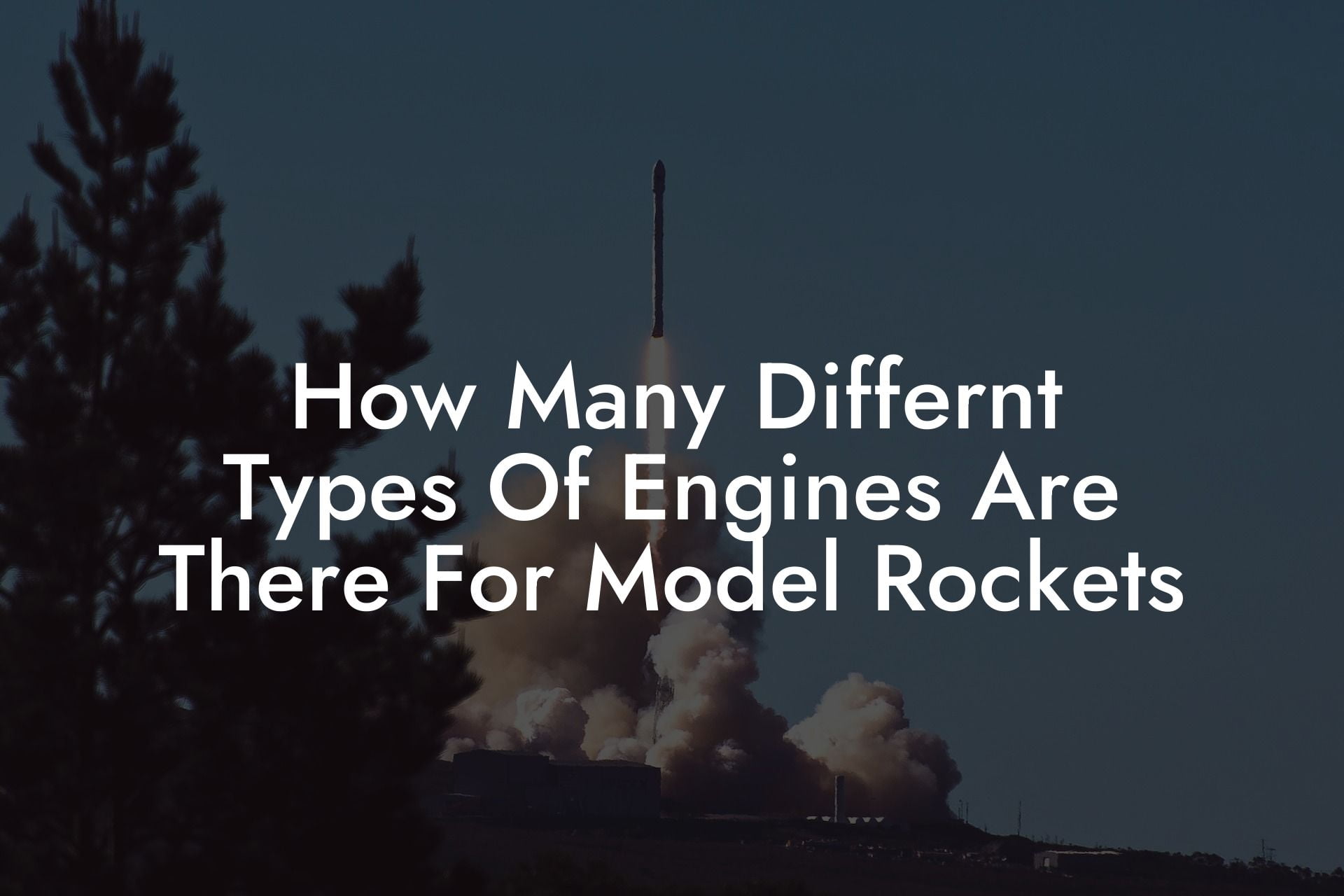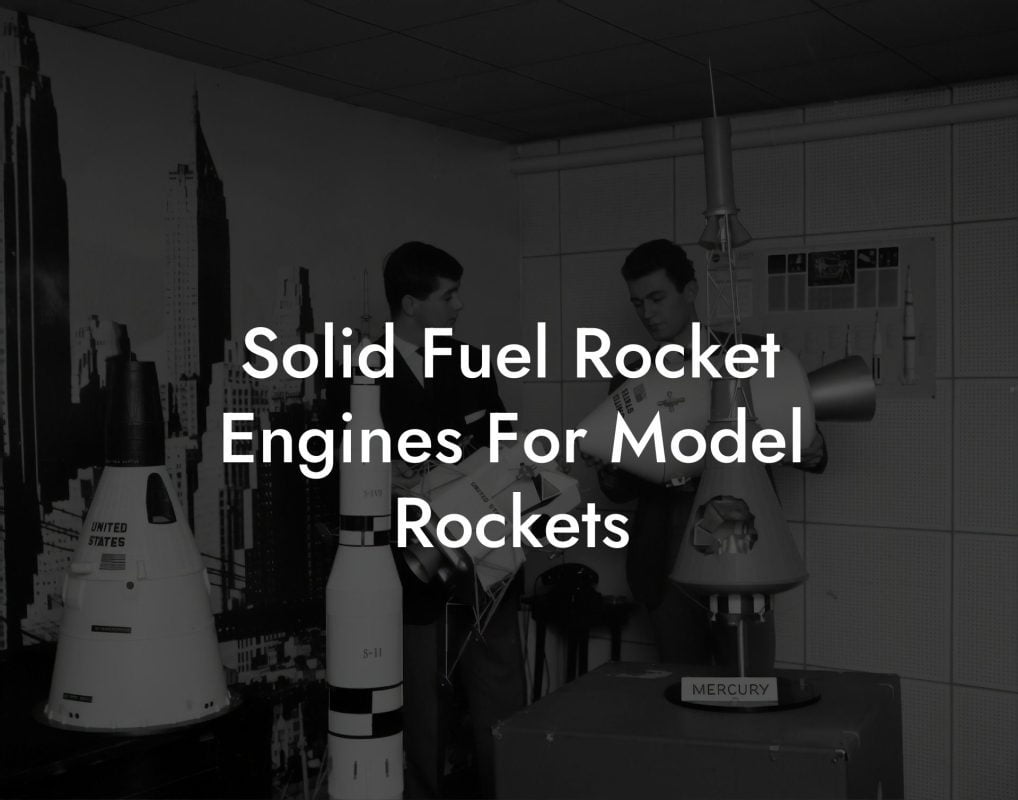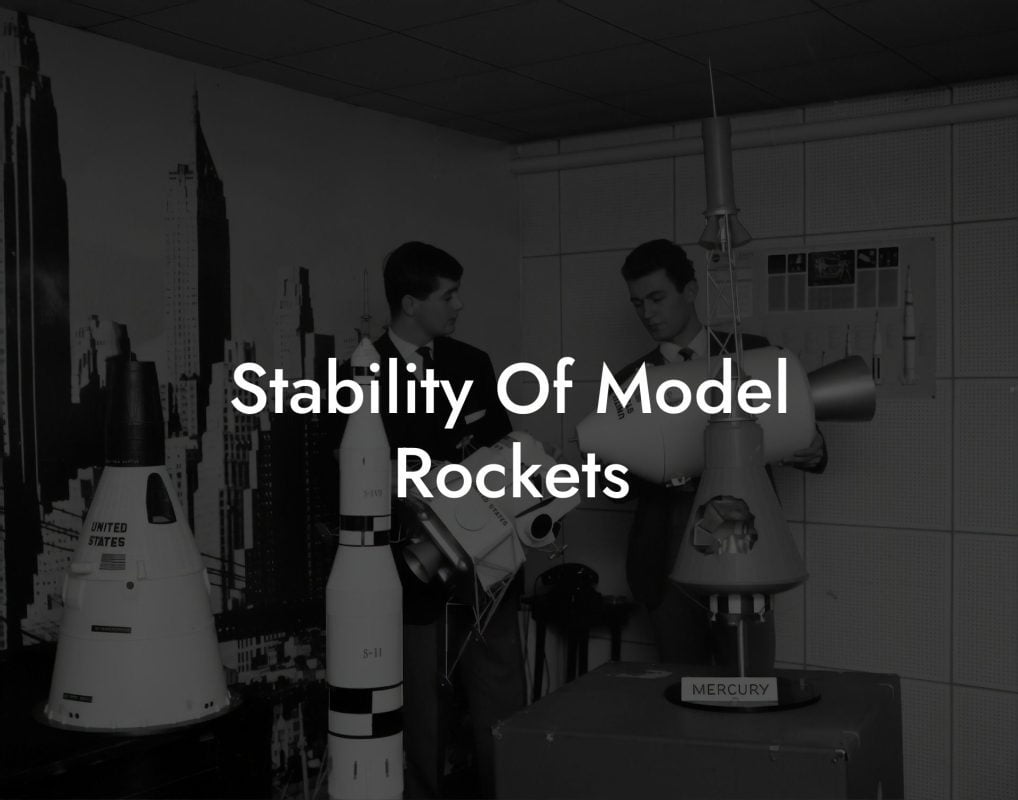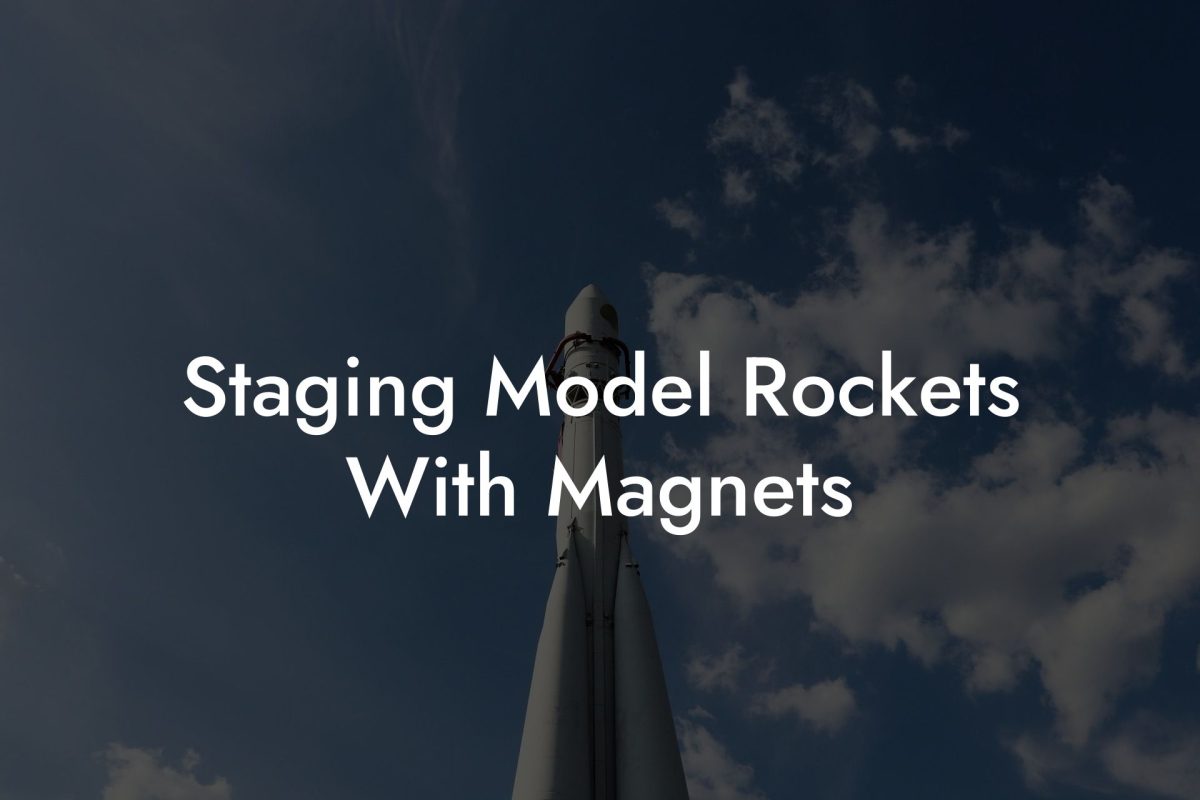Imagine blasting off into the world of model rocketry, where the thrill of launch day meets the excitement of exploration and discovery. But before you can reach for the stars, you need to understand the heart of your rocket: the engine. With so many types of engines out there, it can be overwhelming to choose the right one for your model rocket. Fear not, space enthusiast! This comprehensive guide will propel you into the world of model rocket engines, exploring the different types, their characteristics, and how to choose the perfect one for your next launch.
Quick Links to Useful Sections
What Are model rocket Engines?
Model rocket engines are the powerplants that propel your rocket into the sky. They come in various shapes, sizes, and types, each designed to meet specific needs and performance requirements. From small, low-power motors to large, high-thrust engines, the options are vast and varied.
Model rocket engines are typically classified into three main categories: black powder, composite, and hybrid. Each type has its own strengths, weaknesses, and applications, which we'll explore in detail below.
Black Powder Engines
Black powder engines are the most common type of model rocket engine. They use a mixture of charcoal, sulfur, and potassium nitrate (black powder) as the propellant. These engines are simple, reliable, and relatively inexpensive.
- Advantages: Low cost, easy to use, and widely available.
- Disadvantages: Limited thrust, short burn time, and can be messy.
Composite Engines
Composite engines use a combination of ammonium perchlorate and a polymer binder as the propellant. They offer higher thrust and longer burn times than black powder engines, making them suitable for larger and more complex model rockets.
Looking For The Best Model Rocket Kits? You'll Love These:
- Advantages: Higher thrust, longer burn time, and more efficient than black powder engines.
- Disadvantages: More expensive, require special handling and storage, and can be more complex to use.
Hybrid Engines
Hybrid engines use a combination of solid and liquid propellants. They offer the high thrust of composite engines with the flexibility of liquid-fueled engines. Hybrid engines are ideal for high-performance model rockets and are gaining popularity among enthusiasts.
- Advantages: High thrust, flexible, and can be reused.
- Disadvantages: Complex to use, require special equipment, and can be expensive.
Other Types of Model Rocket Engines
While black powder, composite, and hybrid engines are the most common types, there are other options available for model rocket enthusiasts.
- Liquid-Fueled Engines: Use liquid propellants, offering high thrust and flexibility, but require complex plumbing and safety precautions.
- Electric Motors: Use electric power to generate thrust, offering high efficiency and low noise, but are typically used for smaller model rockets.
- Pneumatic Engines: Use compressed air or gas to generate thrust, offering high power-to-weight ratios, but require complex plumbing and safety precautions.
Choosing the Right Engine for Your Model Rocket
With so many types of engines available, selecting the right one for your model rocket can be daunting. Consider the following factors to make an informed decision:
- Thrust Requirements: Determine the minimum thrust required to lift your rocket safely and efficiently.
- Model Rocket Size and Weight: Choose an engine that matches the size and weight of your rocket.
- Performance Requirements: Consider the desired altitude, speed, and duration of your rocket's flight.
- Safety Considerations: Ensure the engine you choose meets safety guidelines and regulations.
- Cost and Availability: Balance your budget with the availability and cost of the engine.
Resources and community Support: Your Next Steps
Now that you've explored the world of model rocket engines, it's time to take your knowledge to the next level. Join online forums, attend local model rocket clubs, and connect with fellow enthusiasts to learn more about the latest trends and best practices.
Remember to always follow safety guidelines and regulations when working with model rocket engines. With the right engine and a passion for exploration, you'll be blasting off into the world of model rocketry in no time!
Looking For The Best Model Rocket Kits? You'll Love These:
Useful Interruption: Dive deeper into the world of Model Rockets with our most popular sections. If there is anything you think is missing or anything you would love for us to write about, just give us a shout.
- Getting Started & Basics With Model Rockets
- Model Rocket Design, Build & Customization
- Model Rocket Propulsion & Engine Technology
- Model Rocket Launch Techniques & Recovery
- Model Rocket Advanced Rocketry & Innovations
- Model Rocket DIY and Customization
- Model Rocket Equipment Reviews & Digital Tools
- Community, Competitions & Education
- Model Rocket Troubleshooting & FAQs
- Model Rocket Bonus/Seasonal & Niche Topics
A group of model rocket enthusiasts gathered at a field for their weekly launch event. Among them was Dave, a seasoned builder known for pushing the limits of hobby rocketry. This time, he had outdone himself.
“Ladies and gentlemen,” Dave announced, dramatically pulling a cloth off his latest creation, “I present to you: The Kraken!”
The crowd gasped. This wasn’t just a model rocket, it was a monster. The thing stood 8 feet tall, had six clustered engines, and was covered in enough duct tape to qualify as a classified aerospace project.
“Dave,” muttered Steve, the cautious safety officer, “Have you, uh… done the math on this?”
“Math?” Dave scoffed. “I built it in my garage at 3 a.m. with parts from eBay. This is an art piece, Steve.”
The countdown began.
5…
4…
3…
2…
1…
The engines ignited with a BOOM, and The Kraken shot up… kind of. It immediately did a violent barrel roll, narrowly missing the spectators before skyrocketing at an angle that could only be described as “legally questionable.”
The crowd collectively ducked as The Kraken flew straight over the adjacent cornfield, where Old Man Jenkins, the grumpiest farmer in town, was minding his business.
KABOOM!
The rocket disappeared behind the barn. A moment later, a flaming piece of Estes igniter wire landed at Steve’s feet. The silence was deafening.
And then, an unmistakable sound echoed across the field.
Jenkins’ shotgun being cocked.
“DAVE!!!” Steve shouted. “RUN.”
And that was the day Dave invented the first-ever biologically powered rocket booster: pure adrenaline.
To this day, nobody knows where The Kraken landed, but legend has it, it still haunts the skies, terrifying unsuspecting drones and low-flying birds.















